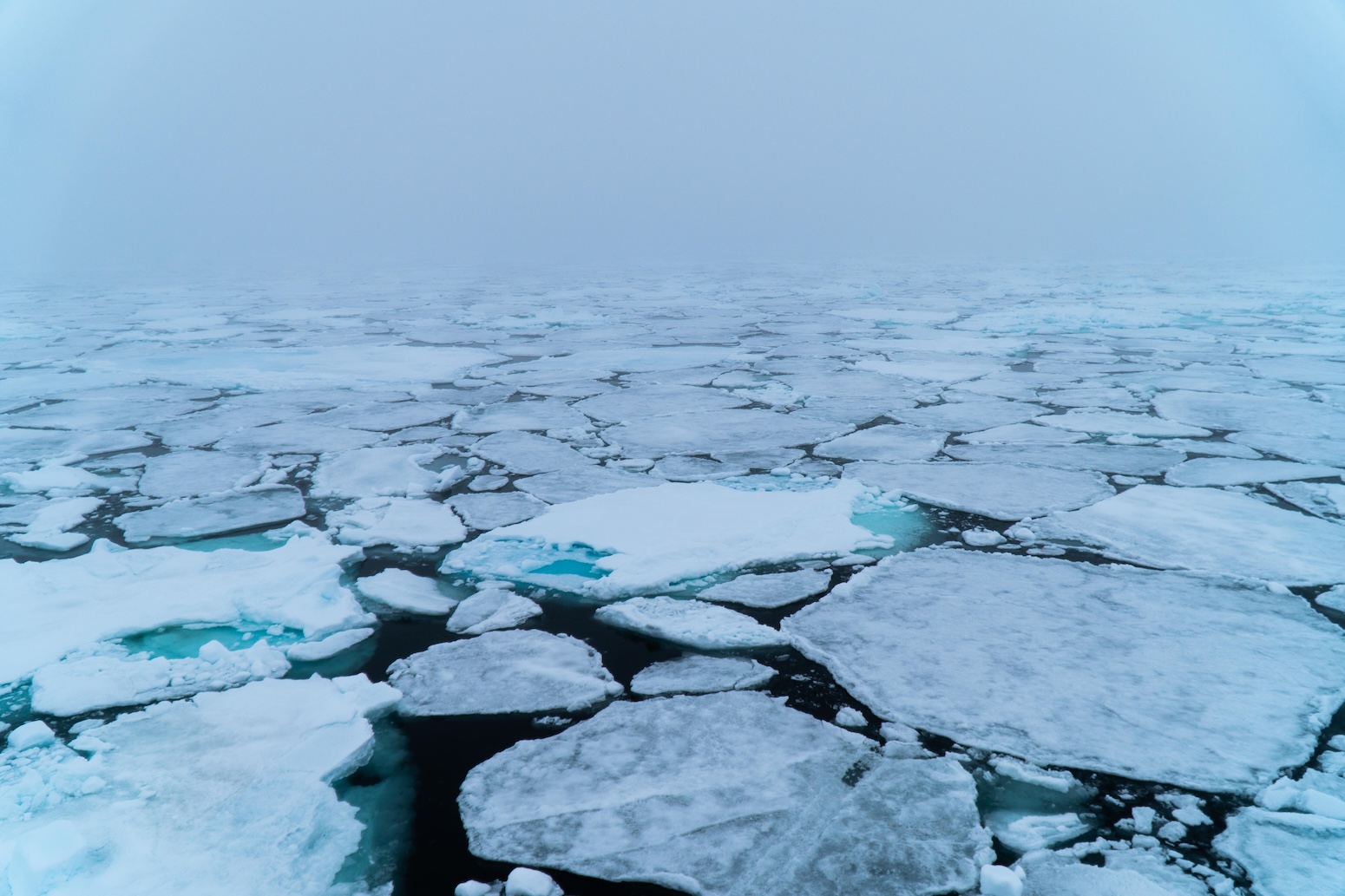A new study warns that global declines in soil moisture in the 21st century could mark a “permanent” shift in the world’s water cycle.
Combining data from satellites, sea level measurements and observations of “polar motion”, the research shows how soil moisture levels have decreased since the year 2000.
The findings, published in Science, suggest the decline is primarily driven by an increasingly thirsty atmosphere as global temperatures rise, as well as shifts in rainfall patterns.
Consequently, the researchers warn the observed changes are likely to be “permanent” if current warming trends continue.
An accompanying perspective article says the study provides “robust evidence” of an “irreversible shift” in terrestrial water sources under climate change.
The drying out of soil “increases the severity and frequency” of major droughts, with consequences for humans, ecosystems and agriculture, explains Dr Benjamin Cook, an interdisciplinary Earth system scientist working at the NASA Goddard Institute for Space Studies and Columbia University, who was not involved in the research.
He tells Carbon Brief:
“Droughts are one of the most impactful, expensive natural hazards out there, because they are typically persistent and long lasting. Everything needs water – ecosystems need water, agriculture needs water. People need water. If you don’t have enough water – you’re in trouble.”
Drying soil
Every year, around 6tn tonnes of water cycles through Earth’s land surface. When rain falls on land it gets held up in soil, wetlands, groundwater, lakes and reservoirs on its journey back to the oceans.
Soil moisture forms a critical part of the Earth’s system, helping to irrigate soil, cycle nutrients and regulate the climate.
The amount of water contained in the soil is sensitive to a range of factors, including changes in rainfall, evaporation, vegetation and climate – as well as human activity, such as intensive agriculture.
The research points to a “gradual decline” in soil moisture levels in the 21st century, kickstarted by a period of “sharp depletion” in the three years over 2000-02.
Specifically, the researchers find the depletion of soil moisture resulted in a total loss of 1,614bn tonnes (gigatonnes, or Gt) of water over 2000-02 and then 1,009Gt between 2002 and 2016.
(For context, ice loss in Greenland resulted in 900Gt of water loss over 2002-06.)
Soil moisture has not recovered as of 2021, according to the research, and is unlikely to pick up under present climate conditions.
Joint-lead author Prof Dongryeol Ryu, professor of hydrology and remote sensing at the University of Melbourne, explains to Carbon Brief:
“We observed a stepwise decline [in soil moisture] twice in the past two decades, interspersed within a continuously declining trend in soil moisture. We haven’t seen this trend earlier, so that is why this is very concerning.”
Ryu explains the decision to analyse changes to soil moisture on a global scale meant the researchers could confirm trends difficult to see in smaller geographic datasets:
“The unique thing we found through analysing these larger-scale measures is that – even if we have seen widely fluctuating ups and downs in precipitation and increasing temperature – the total water contained in the soil, as soil moisture and groundwater, has been declining gradually from around the beginning of this century.“
The maps below illustrate soil moisture changes in 2003-07 and 2008-12 against a 1995-99 baseline, as estimated by the ERA5-Land reanalysis dataset. The areas marked on the map in brown saw a drop in soil moisture and the areas marked in blue an increase in soil moisture.
The top map shows soil moisture depletion across large regions in eastern and central Asia, central Africa and North and South America over 2003-07. The lower map shows that “replenishment” in the years that followed occurred in relatively small parts of South America, India, Australia and North America.
Climate change
Ryu says the researchers “suspect that increasing temperature played an important role” in the decline in terrestrial water storage and soil moisture in the 21st century.
The study points to two factors driving gradual depletion of soil moisture over the last quarter century: fluctuations to rainfall patterns and increasing “evaporative demand”.
Evaporative demand refers to the atmosphere’s “thirst” for water, or how much moisture it can take from the land, vegetation and surface water.
Studies have highlighted how global evaporative demand has been increasing over the last two decades globally, impacting water availability, hurting crops and causing drought.
The new study notes that “increasing evaporative demand driven by a warming climate” suggests a “more consistent and widespread trend toward drying as temperatures rise”.
Ryu says the “very unusual” drop in water moisture observed over 2000-02 could be attributed to low levels of rainfall globally, which coincided with the “period when evaporative demand started increasing”.
Another – less pronounced – period of rapid soil moisture decline seen over 2015-16 can be attributed to droughts triggered by the 2014-16 El Niño event, Ryu notes.
Ryu says the study findings indicate that soil moisture can no longer bounce back from a dry year, as it has in the past:
“It used to be that when precipitation goes up again, we recover water in the soil. But because of this increasing evaporative demand, once we have strong El Niño years – which lead to much less rainfall for a year or two – it seems that we are not recovering the water fully because of increasing evaporative demand. Because of that – even if we have a wet year following dry years – the water in the soil doesn’t seem to recover.”
Cross-validation
Measuring changes in global soil moisture has historically presented a challenge to scientists, given the lack of comprehensive and direct observations of water in soil.
The researchers attempt to reduce this uncertainty by corroborating the ERA5-Land reanalysis dataset from the European Centre for Medium-Range Weather Forecasts (ECMWF) with three geophysical measurement datasets.
ERA5’s land surface modelling system uses meteorological and other input data to estimate water within the upper few metres of the soil.
These figures were compared with data collected by the Gravity Recovery and Climate Experiment (GRACE) mission – a joint satellite mission between NASA and the German Aerospace Center.
Running since 2002, the GRACE mission tracks changes to the Earth’s gravity by collecting data on groundwater depletion, ice sheet loss and sea level rise. These observations have revealed a persistent loss of water from land to the ocean.
The scientists also cross-reference the ERA5 reanalysis data with a century-old dataset that measures fluctuations in the rotation of the Earth as the distribution of mass on the planet changes.
(The redistribution of ice and water, such as melting ice sheets and depleting groundwater, causes the planet to wobble as it spins and its axis to shift slightly. This is known as “polar motion”.)
The third set of measurements the scientists use is global mean sea level height, which is collected by satellites.
To extract soil moisture changes from this set of data, the researchers subtracted other components of sea level rise from the overall total – including Greenland ice melt, Antarctica ice melt, the impact of increasing sea surface temperature (which expands water volume) and the contribution of groundwater.
This process of elimination left researchers with an estimate of the contribution of soil moisture to global sea level rise.
The study notes that both the sea surface height and polar motion observations “support the conclusion that the abrupt change in soil moisture is genuine”.
Ryu says using global average sea level rise and “Earth wobble” to track water redistribution on land is the “main innovation” applied in the paper.
He adds the value of “reverse engineering” the ERA5 dataset is to understand how to enhance land surface modelling in the future:
“By explaining all the contributing factors to this measurement, you can understand the process. And if you understand the process, you can actually predict what’s going to happen in the future if any of these factors change in a certain manner.”
NASA’s Dr Cook says the “corroborating evidence” supplied by the paper offers a “really strong case that there has been a large-scale decline in soil moisture in recent decades”.
However, he says the relatively short reference period of the study means that identifying the cause of the decline is less clear cut:
“Whether [the decline] is permanent or not is much more uncertain…On these timescales, internal natural variability can be really, really strong. Attributing this decline to something specific – either climate change or internal variability – is much much more difficult.”
Sea level rise
A notable finding in the study’s sea level rise analysis is that terrestrial water storage may have been the dominant driver of sea level rise in the early 21st century.
Specifically, the paper notes that the decline in terrestrial water storage over 2000-02 – when soil moisture plummeted – led to global average sea level rise of almost 2mm annually.
The researchers note this rate of sea level rise is “unprecedented” and “significantly higher” than the rate of sea level rise attributed to Greenland ice mass loss, which they note is approximately 0.8mm a year.
Prof Reed Maxwell, a professor at the High Meadows Environmental Institute at Princeton University, who was also not involved in the study, says the researchers’ efforts to compare soil moisture with other global water stores was “novel” and “opens the door to future study of a more holistic global water balance”.
‘Creeping disaster’
The paper notes that land surface and hydrological models require “substantial improvement” to accurately simulate changes in soil moisture in changing climate.
Current models do not factor the impacts of agricultural intensification, nor the ongoing “greening” of semi-arid regions – both of which “may contribute” to a further decline in soil moisture, it states.
Writing in a perspectives article published in Science, Prof Luis Samaniego from the department of computational hydrosystems at the Helmholtz Centre for Environmental Research says that it is “essential” that next-generation models incorporate human-caused influences such as farming, large dams and irrigation systems.
The study posits that the “innovative methods” for estimating changes in global soil moisture presented in the study provide opportunities to “improve the present state of modelling at global and continental scales”.
More broadly, advances in scientific understanding of changes to soil moisture can help improve the world’s preparedness for drought.
Drought is often described as a “creeping disaster” – because by the time it is identified, it is usually already well under way,
Paper author Ryu explains:
“Unlike a flood and heatwaves, drought comes very very slowly – and has prolonged and delayed consequences. We better be prepared earlier than later, because once drought comes you can expect a long period of consequences.”
Dr Shou Wang, associate professor at the Hydroclimate Extremes Lab and the Hong Kong Polytechnic University, who was not involved in the study, says the research findings are “crucial” for advancing understanding of the “potential drivers and dynamics” of “unprecedented hydrological extremes in a warming climate”. He tells Carbon Brief:
“This is breakthrough work that uncovers the drivers of hydrological regime changes, which are leading to unprecedented hydrological extremes such as compound and consecutive drought-flood events.”
Sharelines from this story



















Discussion about this post